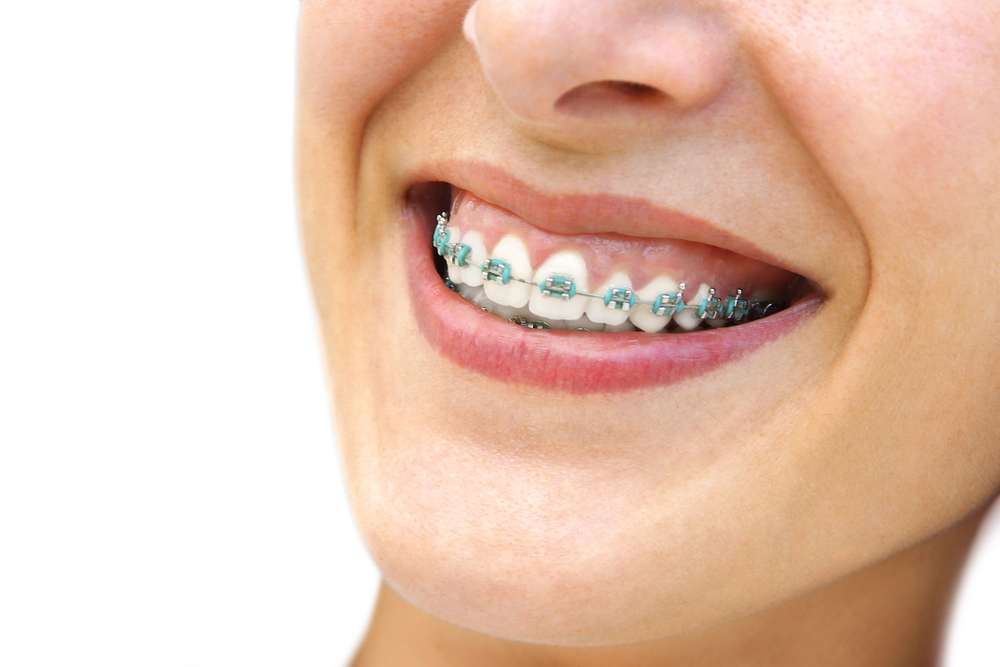
One of the most common questions we hear from patients who have just gotten their braces off is, “What’s the best way to whiten my teeth?” After months (or sometimes years!) of shifting and aligning, it’s obvious why you want your freshly straightened smile to be white, bright, and attention-grabbing.
There are plenty of products to choose from when it comes to whitening your teeth after braces, but finding the best product to do so safely is imperative. After all, you just invested a significant amount of time and money into your teeth, so continue to choose only the best for the health of your teeth.
Always Discuss Treatment Options Before Whitening
Before you begin any whitening treatment, discuss the possible risks with your orthodontist and a knowledgeable dentist, especially if you plan on using an at-home bleaching system.
Previous Dental Work
If you have dental work on your front teeth, such as fillings, veneers, a bridge, implants, or crowns, these prosthetics will not whiten the way your natural teeth would. Bleaching is only effective and impactful on your natural enamel, so if you have any dental work that shows when you smile, have a discussion with your dentist on how to go about whitening your smile correctly so everything matches.
Risks Associated With Teeth Whitening
Risks associated with teeth whitening include tooth sensitivity and even damage to the roots of your teeth. Your dentist will be able to help you in answering any questions you may have about whitening products like:
How long will my results last?
Whitening results will vary among individuals depending on the person’s teeth and the whitening treatment they choose. Professional whitening treatment will last longer than an at-home one.
Am I comfortable whitening at home? How much guidance would I like to have?
Your level of comfort when it comes to whitening is up to you. If you have any hesitations about self-whitening, discuss your concerns with your dentist.
What if I want to see dramatic results right away?
In-office bleaching treatments are the strongest, so the dentist must take precautions to protect the gums from coming in contact with the whitening solution. You will achieve the most dramatic results from an in-office whitening treatment v.s an at-home whitening kit.
Are my teeth going to be sensitive?
Your dentist can predict if you will have problems with your teeth becoming sensitive after a whitening treatment. They may also help you alleviate sensitivity by recommending specific products to treat sensitivity and checking for signs of root damage caused by tooth whitening.
Finding the Right Option For Your Smile
There are many different ways to whiten teeth. Here’s our breakdown of the options to help you find which is best for you.
Whitening Toothpaste
Toothpaste with specified whitening ingredients works by lightening your teeth superficially by being more abrasive than regular toothpaste. Whitening toothpaste can remove staining on the surfaces of your teeth, but not the interior color.
Professional Whitening From Your Dentist
A high concentration of peroxide is applied to the teeth, and a light is used, which accelerates the chemical reaction and the whitening agents. With a few sessions, about an hour each time can produce quick and dramatic results.
Custom Whitening Trays
Custom-made by your dentist, whitening trays are created after your dentist takes impressions of your teeth. These trays resemble a retainer or mouth guard and are then used by squirting professional-grade hydrogen peroxide gel into the trays and placing them in your mouth for the recommended time. The trays keep the whitening gel in place surrounding the surfaces of your teeth and away from the gum line where the whitening gel can cause harm.
Whitening Strips
Each whitening strip is coated with a whitening gel that contains hydrogen peroxide. Each strip molds around your teeth – one strip for the top and one for the bottom teeth. Because the whitening strips aren’t fitted to your exact teeth, they can often produce uneven results and don’t get into the curves between your teeth, causing white surfaces and yellow edges.
Avoid These Whitening Mistakes
Whiten safely and effectively by avoiding these often made mistakes when it comes to bleaching your teeth:
- Never whiten without talking to your dentist first
- Don’t rely on whitening mouth rinses
- Avoid leaving whitening strips on for longer than directed
- Always check for the FDA seal on the whitening product
- Do not whiten excessively
- Always use the right product for your teeth
Whether you’re about to get your braces off or you had them taken off recently, there are plenty of great whitening options to help make your newly straightened smile even more beautiful. Ask Thomas Orthodontics which treatments we recommend for which ages at your next appointment.





